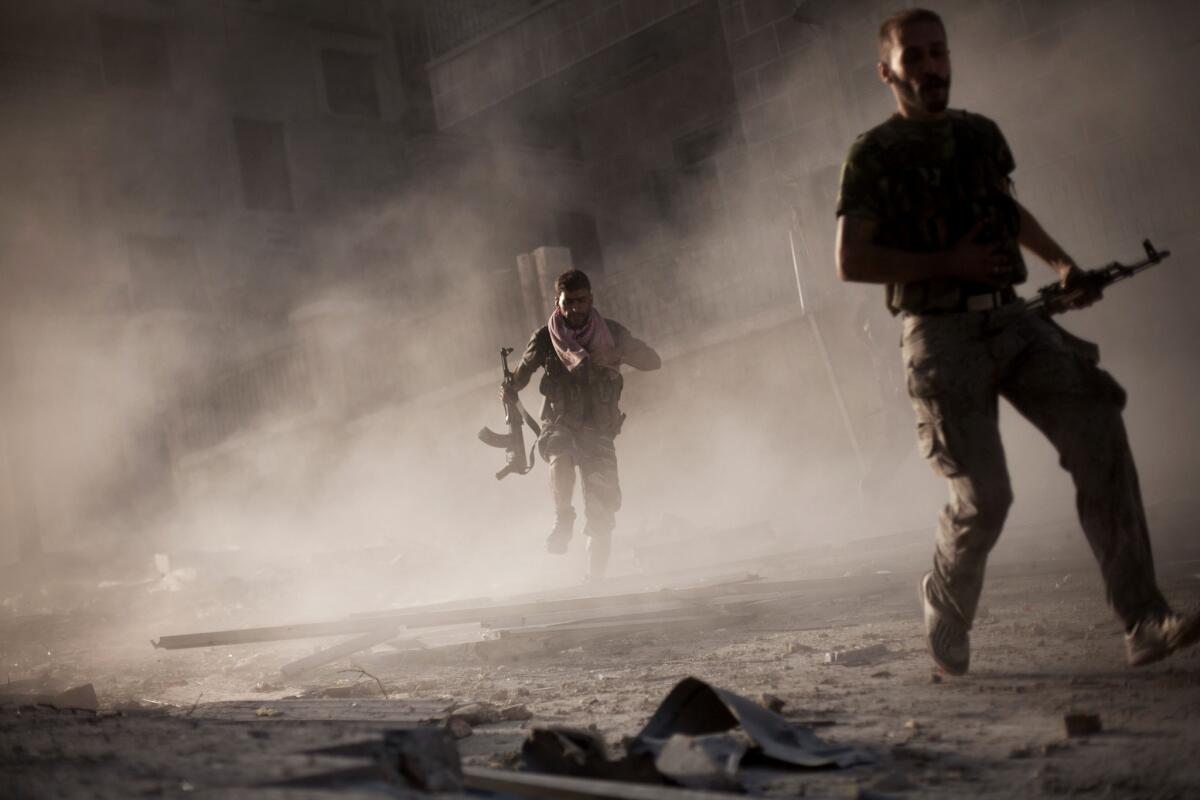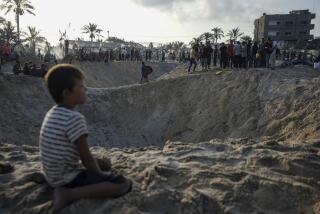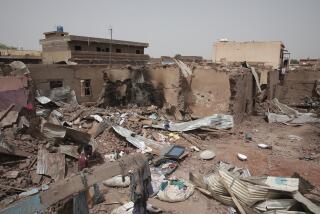Moonwalking in Syria

Here’s how feeble U.S. influence on the outcome of Syria’s dreadful civil war has become: For the Obama administration’s diplomacy to succeed, it now needs help from an armed group with the unpromising name of the Islamic Front.
That wasn’t where the administration hoped to be. When President Obama first got interested in Syria back in 2011, his hope was that a popular uprising just needed a little moral support from the outside world to topple the brutal regime of Bashar Assad.
When that didn’t work, Obama offered modest, mostly non-military aid to moderate groups in the Syrian opposition, enough to raise their hopes but not enough to ensure success on the battlefield. And when Assad used chemical weapons against civilian neighborhoods, Obama threatened military action — only to back off, again dashing the hopes of pro-U.S. factions in the opposition.
YEAR IN REVIEW: Highs and lows from Obama’s roller-coaster year
Meanwhile, other forces were competing for influence in the Syrian snake pit, too. Al Qaeda and its allies sponsored jihadist groups that imported aspiring terrorists from Iraq and other countries. Saudi Arabia and other wealthy Persian Gulf countries also funded armed factions.
The United States, worried about weapons falling into the wrong hands, moved cautiously; the Saudis and others were quicker and more generous. Many young rebels, following the money (and, more important, the weapons), voted with their feet and joined the Islamic Front.
And that brings us to the situation in Syria today: a civil war among four main factions, in which the group supported by the United States, the Free Syrian Army of Gen. Salim Idriss, appears to be the weakest.
Last weekend, the headquarters and main warehouse of the FSA were overrun by troops of the Saudi-funded Islamic Front. The attackers made off with much of the U.S.-supplied equipment there, including trucks and food rations (but not weapons, officials say). One spokesman for the FSA told reporters that Idriss’ forces surrendered amicably because they weren’t strong enough to defend the facility against a threatened attack by more radical jihadists. No matter how friendly the transaction, that wasn’t a good sign.
The dust-up had the effect of both embarrassing Idriss, who spent much of the week denying that he had fled the country, and confirming the most important new fact on the ground: The strongest player in the opposition now is the Islamic Front, a loose alliance of seven factions that wants Syrians to live under Sunni Muslim law.
“They’re Salafists but not extremists,” explains Andrew J. Tabler, a Syria expert at the Washington Institute for Near East Policy. What that means is that although members of the front want a government dominated by devout Sunnis, and they probably aren’t reliable pluralist democrats, they’re at least not Al Qaeda-style terrorists.
That’s why U.S. diplomats have been trying to persuade the Islamic Front to join — or at least endorse — the peace conference that’s scheduled to begin in the Swiss city of Montreux next month.
The top U.S. negotiator on Syria, Ambassador Robert Ford, met in Turkey recently with representatives of the most important faction in the Islamic Front, sources told me. But the outcome of the talks isn’t clear, and in previous statements, the Islamic Front’s leaders have said they will not participate in any talks that include the Assad regime.
In fact, the Assad regime is the only faction in the four-way conflict that has clearly committed to attend the talks, which Secretary of State John F. Kerry has been laboring to organize for more than a year. Even the U.S.-backed civilian groups in Syria’s opposition haven’t confirmed that they are coming. But the United States and Russia will be there, along with as many as 30 other countries, possibly including Iran.
The one thing the peace conference isn’t expected to accomplish is its main goal: to set up a transition government for Syria — one that, in the eyes of the Obama administration, cannot be headed by Assad. Assad and his main backer, Russia, have chosen to ignore that demand.
Instead, officials say, the conference will attempt to launch direct negotiations among Syrian factions, initially on lesser issues — local cease-fires, humanitarian aid — leading, eventually, to talks on what a future government could be.
Meanwhile, though, the civil war will continue, and the Obama administration will face the same unappetizing choices it does now about whether to continue supplying aid to Syrian rebels and, if so, how much and to whom.
The administration could change course and decide that living with Assad is better than the danger of a fragmented Syria overrun by Al Qaeda-backed jihadists. (Former CIA Director Michael Hayden endorsed that option last week, telling a Washington audience that it might be “the best … [of the] very ugly possible outcomes.”) But that would mean a straightforward admission of defeat.
Or the administration could continue what it’s doing now: trying to resuscitate Idriss’ Free Syrian Army, seeking a rapprochement with the Islamic Front and working to keep diplomatic talks alive.
Frederic C. Hof of the Atlantic Council, another Syria expert, calls that “the moonwalk option” — the illusion of forward motion while standing in place — and it’s the most likely outcome. It won’t end the agony of Syria’s people or eliminate the danger of jihadist mini-armies. But it will minimize the immediate risk of U.S. military entanglement — and that, like it or not, has been Obama’s first priority all along.
Twitter: @DoyleMcManus
More to Read
A cure for the common opinion
Get thought-provoking perspectives with our weekly newsletter.
You may occasionally receive promotional content from the Los Angeles Times.











